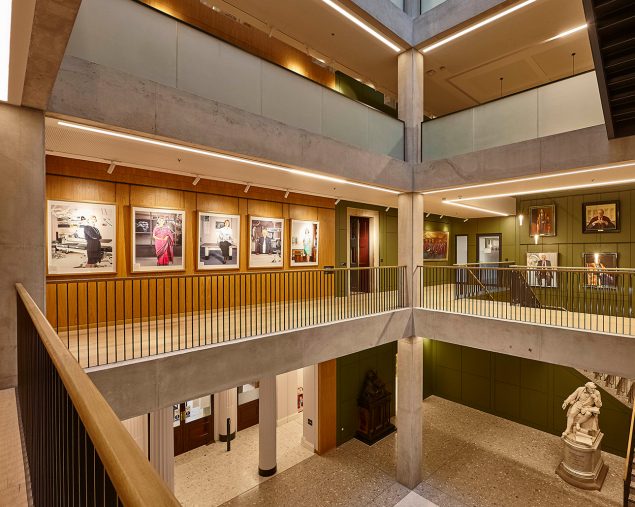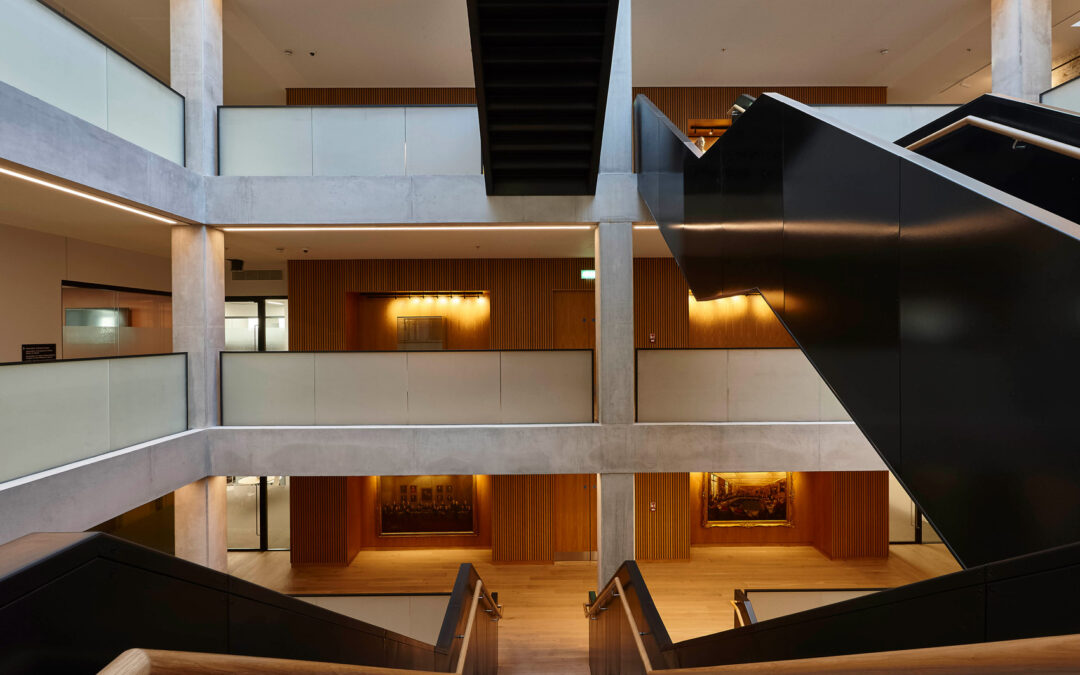Architects HawkinsBrown: Modernisation of a Grade II Listed building in London.
The use of natural materials such as timber plus the latest technology are central to the remodelling of the Royal College of Surgeons by architects Hawkins\Brown.
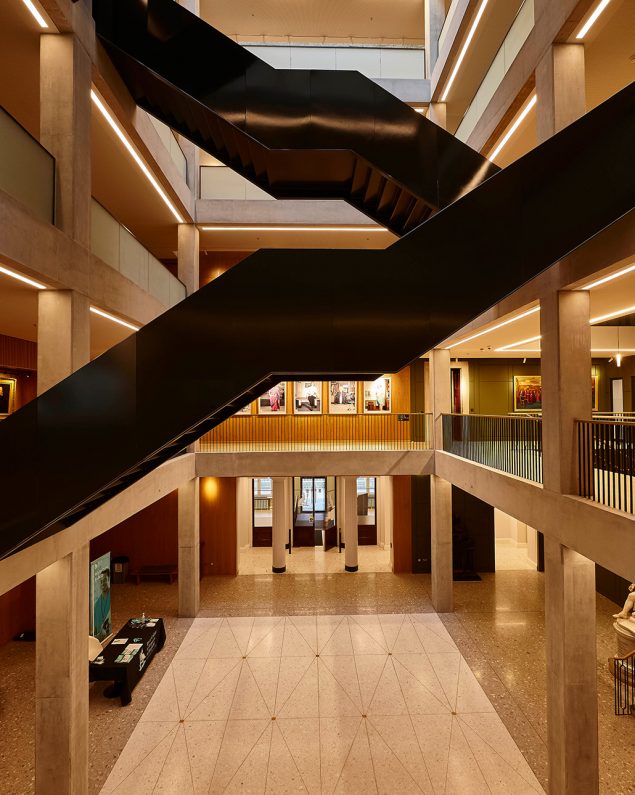
HISTORIC BUILDING
The Royal College of Surgeons building in central London dates all the way back to the early 1800s. It was then rebuilt thirty years later with some post-WWII additions in the 1950s and 1960s. Architects Hawkins\Brown took on the task of adapting and remodelling the Grade II Listed building with natural materials and modern technology. “This was a significant upgrade to the building and a consolidation of the estate to provide not only a modern office but also a space that ensures future education and surgical training,” begins Robert Burrows, architect with Hawkins\Brown.
CELEBRATION - Embracing the old, celebrating the new
“Our design celebrates both the past and future of the College, preserving and celebrating its extraordinary 19th century fabric,” adds Morag Morrison, Partner at Hawkins\Brown. The building’s original rear elevation is now an internal feature, rising through an atrium, having been treated with limewash to stabilise, lift and unify its colour. This also showcases the patina and texture of the brickwork.
The Lumley Library has been refurbished to make facilities fit for a twenty-first century purpose while the Hunterian Museum, meanwhile, one of the most significant private museum collections in the UK, has been relocated to its original pre-WWII position on the ground floor. When it reopens early next year, its programme of events and exhibitions is intended to engage the general public in the Royal College of Surgeons’ work.
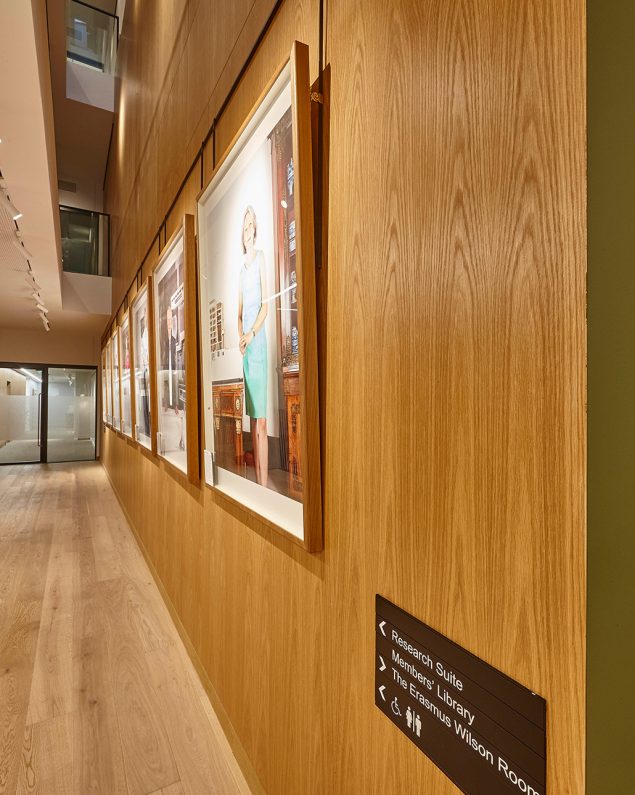
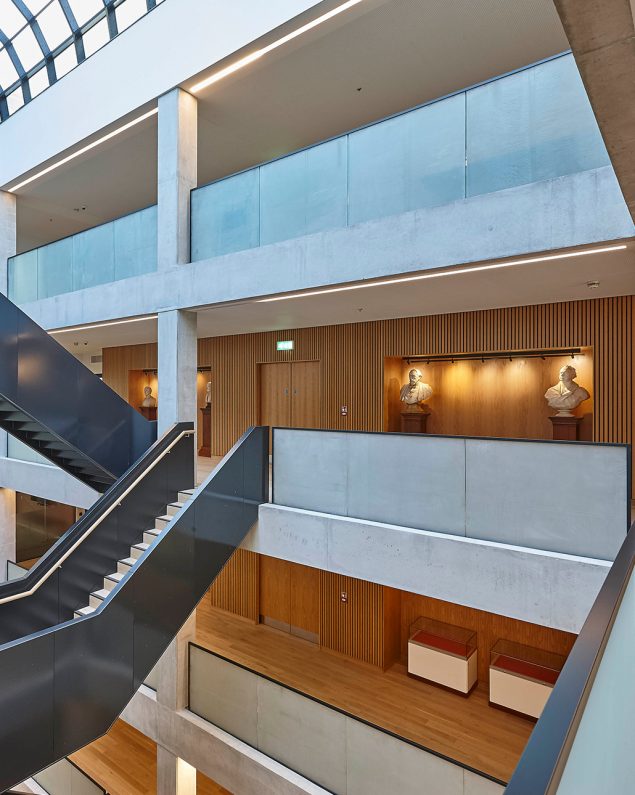
ATRIUM - The importance of a central atrium
Being public-facing was an important element of the scheme. “There’s a large central atrium, which serves as an extension of the Royal College of Surgeons’ museum space,” Burrows adds. “They had a large amount of artefacts and busts and here was an opportunity to display them, centred around the public space.” Just as the barrel-vaulted glazed roof, suspended above the atrium, references a previous roof treatment and the terrazzo flooring is a nod to a marble floor of old, so the use of timber in the atrium is also a reference to the building’s heritage.
Burrows continues, “There were a lot of collegiate and ceremonial rooms on the ground floor with wood panelling, some of which we managed to salvage. We wanted to achieve that same traditional feel but with a soft, natural finish. We clad the main circulation spaces, creating alcoves to display objects.”
Acoustically Sound
Over 1000m2 of Gustafs Panels and more than 450m2 of Ribs were used in the project, supplied via Gustafs’ UK agent LSA Projects. This includes areas of the new 300-person conference facility on the south side of the building. Here the architects mixed plain panels with acoustic panels to support the different acoustic needs of the space, “This is a really flexible space intended to host a range of events from presentations to dinners,” says Burrows. This space also had a modern AV system so any acoustic treatments had to work in harmony with this.
Sustainability on the agenda
As well as maintaining past elements, another part of the design strategy was to future proof the building to meet modern environmental standards in terms of insulation and energy use. To this end, Gustafs’ products met strict sustainable standards and responsible timber sourcing, with veneers for Gustafs Panel System and Gustafs Linear Ribs having FSC certification.
It is clear that the client’s brief has been beautifully realised; creating a new building to provide the best possible facilities for the profession and also for the visitors to the new museum when it opens, preserving the Royal College of Surgeons’ prestigious heritage while looking to the future.
Architects: Hawkins/Brown
Installation: JJ Sweeney
Photos: Adam Coupe
